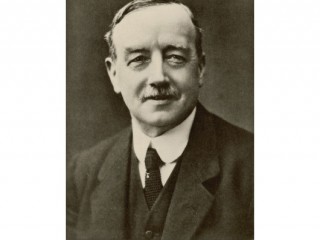
Arthur Henderson biography
Date of birth : 1863-09-13
Date of death : 1935-10-20
Birthplace : Glasgow, Scotland
Nationality : British
Category : Politics
Last modified : 2010-12-14
Credited as : Statesman, foreign secretary, secretary of the Labour party
The British statesman Arthur Henderson was an architect of the Labour party and served as foreign secretary from 1929 to 1931.
Arthur Henderson, the second son of a Scottish cotton spinner, David Henderson, was born in Glasgow on Sept. 13, 1863. He grew up in a poor but hardworking family and attended school in Glasgow and in Newcastle upon Tyne in Northumbria. At age 12 he terminated his schooling and began working in a local foundry.
In his late teens several things happened that profoundly influenced Henderson for the remainder of his life. He happened to hear the famed evangelist Gipsy Smith, who was a captain in the Salvation Army. Henderson was captured by the evangelist's eloquence and joined a local Wesleyan Methodist church. He also became interested in the trade union movement and joined the Friendly Society of Iron founders (later renamed the National Union of Foundry Workers).
Henderson entered politics as an admirer of William Gladstone, who was then in the twilight of his long career. He engaged in local politics as a member of the radical wing of the Liberal party, and in 1892 he was elected a member of the Newcastle City Council. It was the first of several local positions that he held. Throughout this period of his life he remained active in trade union activities and rightfully deserves to be considered one of the founders of the emerging Labour party. In 1911 he became secretary of the Labour party and retained this position until 1934. He entered Parliament in 1903 as a member of the Independent Labour party.
In the House of Commons, Henderson quickly won the respect of his colleagues for his keen knowledge of social and labor problems. When World War I broke out in 1914, he replaced Ramsay MacDonald as Labour leader in the House, and in 1915 he was brought into H. H. Asquith's Cabinet as president of the board of education. Later he resigned this post and accepted the less demanding one of paymaster general. In 1916 the new prime minister, David Lloyd George, made him a member of his War Cabinet. After the first Russian revolution of 1917, Lloyd George sent him on an important mission to Russia. After his return from Russia, however, he broke with Lloyd George over the question of British representation at the proposed conference of international socialists to be held at Stockholm. Consequently, he resigned his Cabinet position and redirected his energies to Labour party affairs.
After the war Henderson remained an instrumental figure in party activities, and he continued to serve, with some interruptions, in the House of Commons. He is best remembered for the 2 years (1929-1931) he spent at the Foreign Office, where he championed policies such as support for the League of Nations and disarmament. He later presided over the World Disarmament Conference which met in Geneva in 1932. He received the Nobel Peace Prize for 1934.
Henderson was known in Labour party ranks as "Uncle Arthur" and was recognized internationally as an "Apostle of Peace." He was respected for his sincere and straightforward ways and throughout his life revealed a great strength of character based upon his strong religious convictions. In 1888 he married Eleanor Watson; they had three sons and one daughter. His family was extremely close and a source of great satisfaction to him. Henderson suffered a heart attack and died on Oct. 20, 1935.
The best biography of Henderson is Mary Agnes Hamilton, Arthur Henderson (1938). Edwin Alfred Jenkins, From Foundry to Foreign Office (1933), is a less complete, journalistic account of his life. Both authors knew Henderson and are sympathetic toward him. For his role in the Labour party, G. D. H. Cole, A History of the Labour Party from 1914 (1948), should be consulted. A perceptive chapter on Henderson's years at the Foreign Office can be found in Gordon A. Craig and Felix Gilbert, eds., The Diplomats, 1919-1939 (1953).
Carlton, David, MacDonald versus Henderson: the foreign policy of the second Labour Government, New York, Humanities Press, 1970.
Carlton, David, MacDonald versus Henderson: the foreign policy of the second Labour Government, London, Macmillan, 1970.
Leventhal, F. M., Arthur Henderson, Manchester, UK; New York: Manchester University Press; New York: Distributed exclusively in the USA by St. Martin's Press, 1989.
















